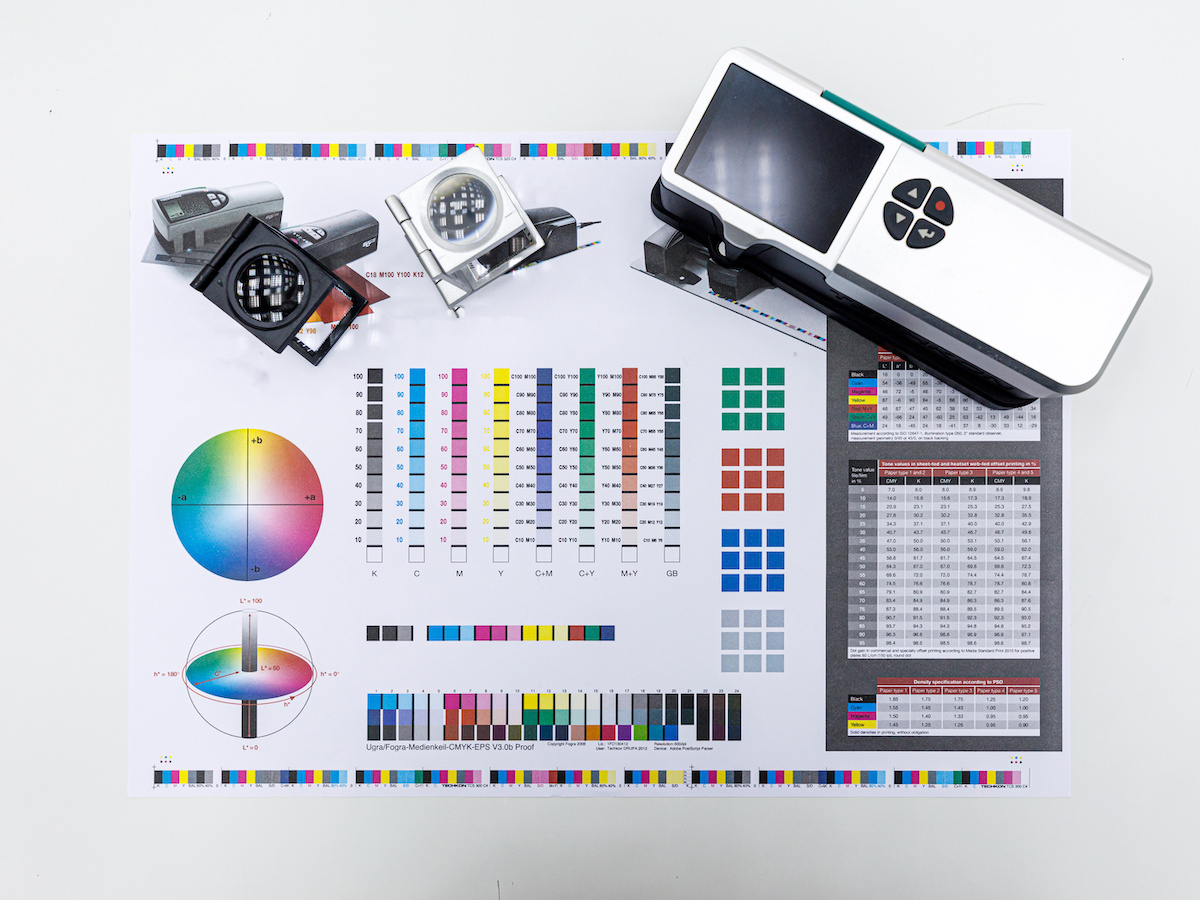3 Reasons Why You Should Have a Spectrophotometer
June 6, 2025 by Dan Gillespie

This article was previously published on aldertech.com
If you’re a designer, printer, or photographer, you’ve probably heard of a spectrophotometer. This nifty device might sound like something out of a science fiction movie, but it’s actually a powerful tool that can make a world of difference in your creative work. Whether you’re working with colors on-screen or in print, ensuring accuracy and consistency is key to professional results. Here’s why investing in a spectrophotometer could be a game-changer for your craft.
1. Unmatched Color Accuracy
As a creative professional, you know the frustration of seeing a project’s colors turn out differently than expected. Whether it’s a print that looks duller than the digital proof or a photo that’s slightly off-tone, mismatched colors can undermine your hard work.
A spectrophotometer takes the guesswork out of color reproduction. It measures the spectral data of colors—essentially capturing their unique fingerprint—to ensure precise color matching. This is especially critical if you’re:
- Printing branded materials that need to match specific Pantone or CMYK values.
- Calibrating monitors to ensure that on-screen colors align with printed outputs.
- Ensuring consistent tones across photo edits or retouching projects.
With a spectrophotometer, you’ll achieve consistent, vibrant, and true-to-life colors, saving you hours of frustrating trial and error.

2. Saves Time and Money
How many times have you had to reprint a project or redo an edit because the colors weren’t quite right? Those do-overs add up—in time, materials, and stress. A spectrophotometer minimizes costly mistakes by letting you get colors right the first time.
For printers, this means fewer wasted sheets, inks, and materials. Designers can confidently send files to clients and printers knowing their work will appear exactly as envisioned. Photographers benefit from calibrated workflows, avoiding mismatched hues in final prints.
In short, investing in this tool means fewer headaches, faster turnarounds, and happier clients—all of which contribute to better profitability.
3. Professional Credibility
In creative industries, your reputation is built on your ability to deliver consistent, high-quality results. A spectrophotometer not only enhances your workflow but also demonstrates your commitment to excellence. When clients know you have the tools to ensure accuracy, they’re more likely to trust you with their projects.
Having a spectrophotometer sets you apart as a professional who takes color seriously. It’s a tangible way to show clients and collaborators that you’re invested in delivering top-notch work—building trust and potentially winning you more business.
Final Thoughts
A spectrophotometer might seem like a luxury at first glance, but for designers, printers, and photographers, it’s a practical investment. The ability to ensure color accuracy, save time and resources, and elevate your professional credibility makes it a must-have tool for anyone serious about their craft.
So, is it time to add a spectrophotometer to your toolkit? Your colors—and your clients—will thank you. Take a look at our online store to peruse 8 different manufacturers products.
Tell us what you think!
Read more articles
The Most Important Checkbox in your RIP Color Management Settings
If you’re serious about color accuracy in your printshop, you’ve likely explored output profiles for your large format printers….
The Future of Large-Format Printing: AI, Sustainability, and Remote Innovation
This article was previously published on printvergence.com At HP we are already looking to the year ahead and all…
What are the complications of ICC RGB profiles?
As content creators, whether you’re a photographer, graphic designer, or digital artist, understanding the role of ICC RGB colour...



